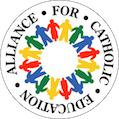Six Things You Should Know about Catholic Schools in 2015-2016
"This isn’t just about implementing a new reading program or raising more funds. There is real tension between old and new, and it must be resolved."
Andy Smarick

The start of the 2015-16 school year is an exciting time for Catholic schools—perhaps even a “renaissance of inner-city Catholic schooling,” according to education reform leader Andy Smarick. As teachers return to their classrooms, parents send their kids off to school, and most importantly, our nation’s children commence another year of growth in mind, body, and spirit, here are six things you should know about Catholic schools this year.
1. Catholic schools are in a state of resurgence, innovation, and renewal. Emerging are new networks of Catholic schools, new governance models, new instructional approaches, and new financing mechanisms that allow parents to choose the best education for their child. Regional, consolidated, or interparochial schools are developing shared, collegial governance structures, and state legislatures around the country are looking for ways—tax credits, vouchers, education savings accounts—to help support and finance full parental choice in school selection for their children.
2. Catholic schools are leading the way in implementing innovative strategies, adopting a STEM (Science, Technology, Engineering, Mathematics) focus as part of a strong Catholic identity to advance the continual enrichment of the curriculum. A high-quality academic program prepares children to become responsible citizens and contributing members of our society.
 3. Pope Francis loves Catholic schools, so much so that he is taking time to visit Our Lady Queen of Angels Catholic School in East Harlem during his visit to the U.S. While the Pope's visit is sure to headline international media attention, his love for children and his esteem for Catholic schools will be mostly clearly seen in this school visit, which the Vatican says he insisted on.
3. Pope Francis loves Catholic schools, so much so that he is taking time to visit Our Lady Queen of Angels Catholic School in East Harlem during his visit to the U.S. While the Pope's visit is sure to headline international media attention, his love for children and his esteem for Catholic schools will be mostly clearly seen in this school visit, which the Vatican says he insisted on.
4. Catholic schools anchor communities, promote social justice, and are one of the most precious gifts of the Church and they exist only through the incredible sacrifice and the dedication of the mission-driven men and women who answer the call to teach and lead within them.
5. Teaching the whole child and respecting all persons and all gifts remain a unique theme of all Catholic schools. Catholic schools engage, in the words of the Congregation of Holy Cross' founder Blessed Basil Moreau, in "the art of forming youth—that is to say, to make of youth people who are conformed to Jesus Christ, their model.” Catholic schools engage in full human formation, so that, as Moreau wrote, "the mind will not be cultivated at the expense of the heart. While we prepare useful citizens for society, we shall likewise do our utmost to prepare citizens for heaven." Catholic schools will continue to teach and live the love and forgiveness of Jesus Christ.
6. In the words of St. John Chrysostom, “there is no greater work than to form the minds and hearts of the young.” Catholic schools are committed to both a religious and academic mission. In a world where values are progressively more and more secular and humanistic, Catholic schools are privileged to teach the faith and nurture in students a personal relationship with Jesus Christ.


